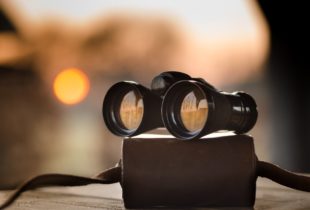I Think I’m Bipolar: What Do I Do Now?
Christian Counselor Spokane
I often hear a great many people discuss the possibility that someone they know or they themselves suffer from Bipolar Disorder. People frequently armchair-diagnose themselves and others, but rarely is the diagnosis understood.
 Most people often associate Bipolar Disorder with hot and cold moods, from being happy one moment to being disgruntled the next. I want to give a clear explanation and definition of Bipolar Disorder and the symptoms one could expect to see if they or someone they know are experiencing distress and have reason to believe they have found the definitive label.
Most people often associate Bipolar Disorder with hot and cold moods, from being happy one moment to being disgruntled the next. I want to give a clear explanation and definition of Bipolar Disorder and the symptoms one could expect to see if they or someone they know are experiencing distress and have reason to believe they have found the definitive label.
Below I have used the information provided by Jessica Truschel and Henry A. Montero, MS, LMHC to illustrate and explain the three disorders encompassed in the term Bipolar and the symptomatology seen in the three disorders.
Bipolar Disorders are described by the American Psychiatric Association’s Diagnostic and Statistical Manual of Mental Disorders (DSM-5) as a group of brain disorders that cause extreme fluctuation in a person’s mood, energy, and ability to function. Bipolar Disorder is a category that includes three different conditions: Bipolar I, Bipolar II, and Cyclothymic Disorder.
- Bipolar I is a manic-depressive disorder that can exist both with and without psychotic episodes
- Bipolar II consists of depressive and manic episodes which alternate and are typically less severe and do not inhibit function
- Cyclothymic Disorder is a cyclic disorder that causes brief episodes of hypomania and depression
Bipolar and related disorders are given a chapter of their own in the DSM-5, between depressive disorders and schizophrenia spectrum disorders. People who live with Bipolar Disorder experience periods of great excitement, overactivity, delusions, and euphoria (known as mania) and other periods of feeling sad and hopeless (known as depression).
 The use of the word Bipolar reflects this fluctuation between extreme highs and extreme lows. The diagnosis is frequently assigned to young patients presenting with a (first) major depressive episode. In these cases, diagnosis is exclusively based on psychiatric history provided by family and caregivers, not on the current psychopathological assessment by the psychiatrist.
The use of the word Bipolar reflects this fluctuation between extreme highs and extreme lows. The diagnosis is frequently assigned to young patients presenting with a (first) major depressive episode. In these cases, diagnosis is exclusively based on psychiatric history provided by family and caregivers, not on the current psychopathological assessment by the psychiatrist.
Bipolar Disorder occurs in up to 2.5% of the population, but the prevalence is much higher among first-degree relatives of individuals with Bipolar or schizophrenia disorder. Individuals with Bipolar Disorder experience mood swings that are less severe in intensity.
During what is known as a hypomanic episode, a person may experience elevated mood, increased self-esteem, and a decreased need for sleep. Unlike a manic episode, these symptoms are not so severe as to impact daily functioning or cause psychotic symptoms.
What’s more, in some cases, a Bipolar episode can include symptoms of both mania and depression; this is what’s known as an episode with mixed features. People experiencing an episode with mixed features may feel extreme sadness, guilt, and worthlessness, while at the same time experiencing high energy, racing thoughts and speech, and overactivity. It is common during a mixed episode for a person to go from being exuberantly happy to be expressing suicidal thoughts in a matter of moments.
Bipolar Disorder: DSM-5 Diagnostic Criteria
 Talking with a doctor or mental health professional is the first step in identifying Bipolar Disorder. Firstly, a doctor may perform a physical evaluation to rule out any other conditions that may be causing symptoms.
Talking with a doctor or mental health professional is the first step in identifying Bipolar Disorder. Firstly, a doctor may perform a physical evaluation to rule out any other conditions that may be causing symptoms.
If no other illnesses are present, the doctor will conduct a comprehensive mental health evaluation to assess the patient’s symptoms per the specific criteria from the American Psychiatric Association’s Diagnostic and Statistical Manual of Mental Disorders (DSM-5). To be diagnosed with Bipolar Disorder, a person must have experienced at least one episode of mania or hypomania.
To be considered mania, the elevated, expansive, or irritable mood must last for at least one week and be present most of the day, nearly every day. To be considered hypomania, the mood must last at least four consecutive days and be present most of the day, almost every day.
During this period, three or more of the following symptoms must be present and represent a significant change from usual behavior:
- Inflated self-esteem or grandiosity
- Decreased need for sleep
- Increased talkativeness
- Racing thoughts
- Distracted easily
- Increase in goal-directed activity or psychomotor agitation
- Engaging in activities that hold the potential for painful consequences, e.g., unrestrained buying sprees
The depressive side of Bipolar Disorder is characterized by a major depressive episode resulting in a depressed mood or loss of interest or pleasure in life. The DSM-5 states that a person must experience five or more of the following symptoms in two weeks to be diagnosed with a major depressive episode:
- Depressed mood most of the day, nearly every day
- Loss of interest or pleasure in all, or almost all, activities
- Significant weight loss or decrease or increase in appetite
- Engaging in purposeless movements, such as pacing the room
- Fatigue or loss of energy
- Feelings of worthlessness or guilt
- Diminished ability to think or concentrate, or indecisiveness
- Recurrent thoughts of death, recurrent suicidal ideation without a specific plan, or a suicide attempt
We all have good and bad days –sometimes we feel on top of the world and other days, if we lose a job, go through a bad break-up, or fall out with a friend, we may be down in the dumps. But have you ever gone to bed one night feeling euphoric and woken up the next morning to find you feel empty and hopeless?
 Have you ever noticed your high-energy levels and racing thoughts suddenly turn to feelings of worthlessness and an inability to experience pleasure doing the same things you once enjoyed? If not, it’s unlikely that you have Bipolar Disorder.
Have you ever noticed your high-energy levels and racing thoughts suddenly turn to feelings of worthlessness and an inability to experience pleasure doing the same things you once enjoyed? If not, it’s unlikely that you have Bipolar Disorder.
Several important features of Bipolar Disorder allow us to distinguish between the severe mental condition and the occasional mood swing. The first feature is whether the fluctuations in mood are caused by a situation, person, or event, or appear to be without cause.
While the moods of people with Bipolar Disorder can be affected by situational variables, people with Bipolar Disorder also frequently become manic or depressed for no apparent reason. In comparison, for most people, moodiness is tied to a situational event, particularly a stressful period, or even hormonal changes in the body.
The duration and intensity of high and low moods are also factors to consider when making a judgment on whether you should be concerned about Bipolar Disorder. Individuals with Bipolar experience an elevated or irritable mood for at least four consecutive days, while their depressive episodes last for at least two weeks at a time.
If you’re struggling with moodiness, the intensity of the moods you are experiencing is likely significantly higher on the intensity scale than those of people with Bipolar Disorder.
If you’re unsure about whether your mood swings are normal or could be symptomatic of Bipolar Disorder. You may want to start a mood diary using an app such as “Daylio” to help keep track and monitor your mood fluctuations. Psychologists and therapists suggest that this can be a therapeutic activity. It can also help you to determine whether events or situations in your life cause your mood swings or if they appear seemingly without cause.
If you are concerned about Bipolar Disorder, we encourage you to make an appointment with your doctor or mental health professional to discuss the specific details of your fluctuating mood.
Reference:
Article by Jessica Truschel, J. T., & Medically reviewed by Henry A. Montero, H. M. (2019, November 25). Bipolar Definition and DSM-5 Diagnostic Criteria. Retrieved September 23, 2020, from https://www.psycom.net/Bipolar-definition-dsm-5/
“Idea”, Courtesy of Pixabay, Pexels.com, CC0 License; “Reading”, Courtesy of Polina Zimmerman, Pexels.com, CC0 License; “Woman Among the Statues”, Courtesy of Cottonbro, Pexels.com, CC0 License; “Opera Glasses”, Courtesy of Skitterphoto, Pexels.com, CC0 License





